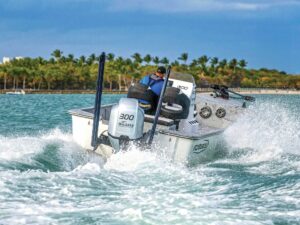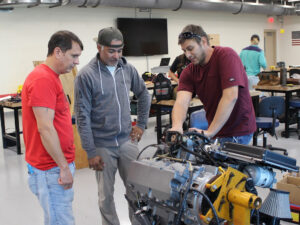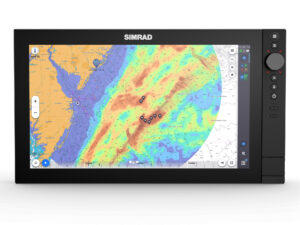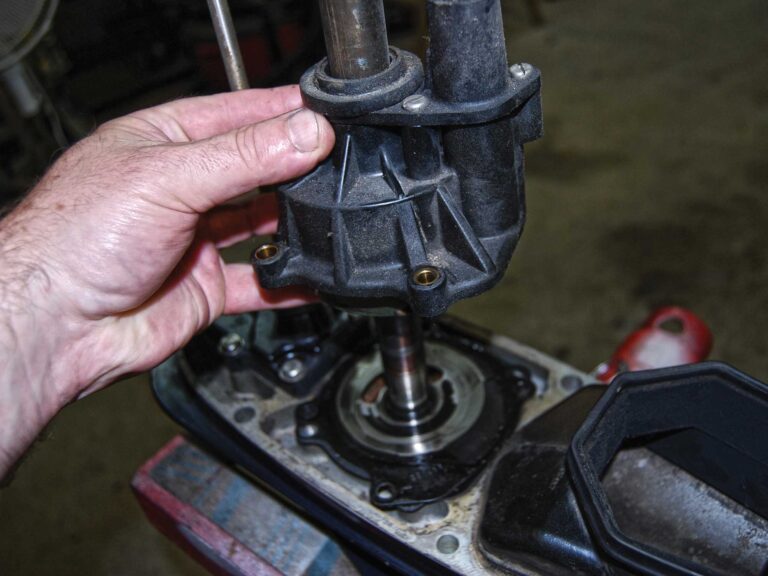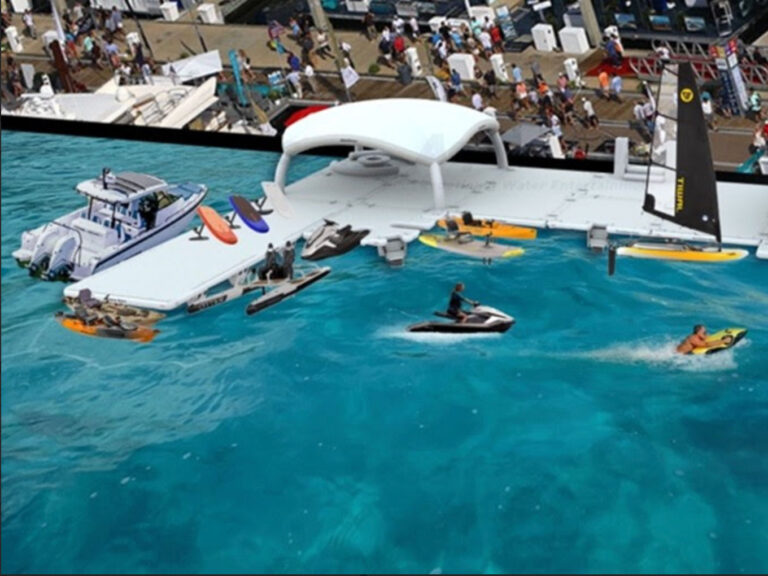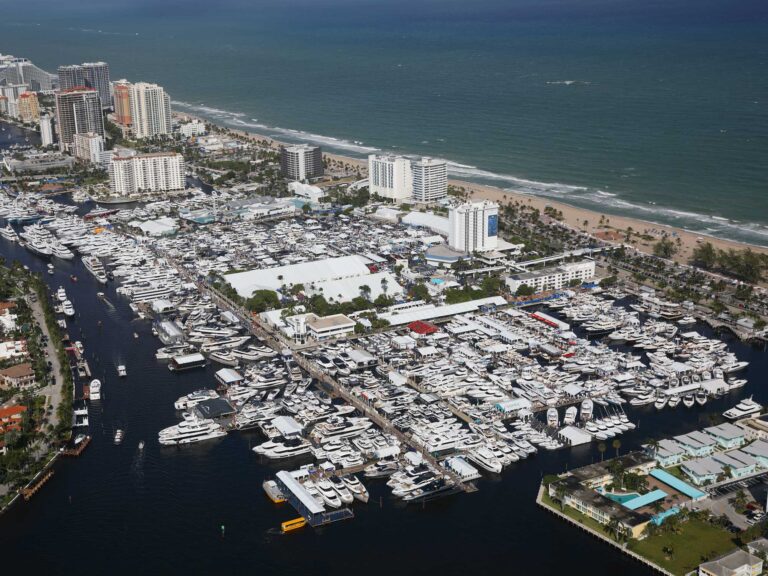
Some people love going overboard.
That’s what scuba diving, snorkeling and freediving are all about — jumping in to swim with the fishes. To explore coral reefs. Shoot pictures. Spear fish. Catch lobsters. Collect scallops. Eradicate invasive lionfish. Or enjoy the relatively new sport of underwater fishing for hog snapper.
While many boaters enjoy snorkeling from time to time, there’s a whole different category of underwater enthusiasts out there, says Ken Clinton, president of Largo, Florida-based Intrepid Powerboats.
“About 10 percent of Intrepid customers want a boat built specifically for diving,” says Clinton. Designing and customizing a new boat to suit the passion of a buyer is one of Intrepid’s specialties.
The same holds true for Miami-based Belzona Marine, a boat company that was built around owner Joel Svensen’s lifelong love for diving and his desire to create a dedicated platform from which to enjoy the sport.
Just as sport fishermen and wake-sports enthusiasts demand special features and equipment to maximize the enjoyment of their respective pursuits, so do divers. Let’s look at some of the features in high demand by boaters who are also avid underwater enthusiasts.
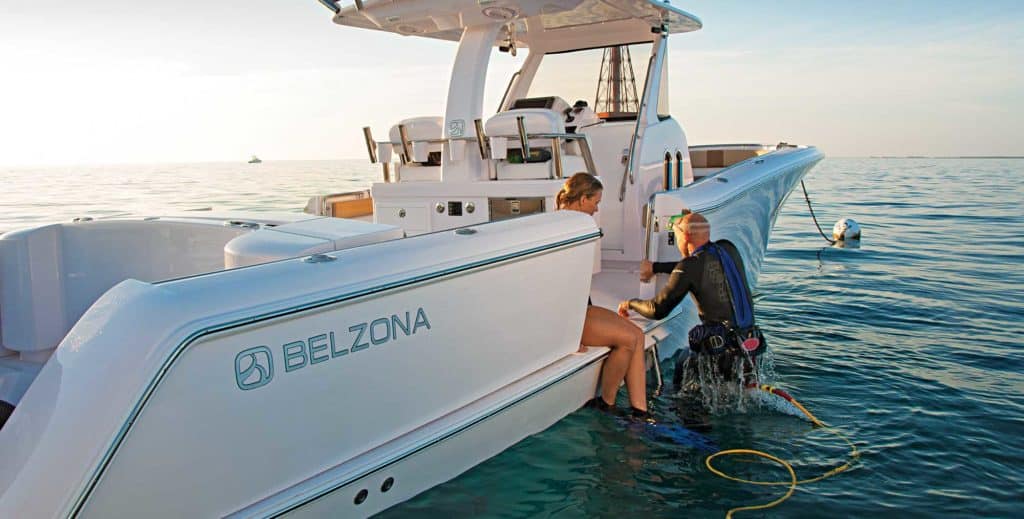
Side Action
Outboard-powered center console, express and walkaround boats represent some of the most popular models for boat-owning dive enthusiasts, especially in the warm, clear waters of Florida and the Bahamas where the underwater world can be spectacular.
Yet outboard boats pose a problem for divers. The motors and rigging make it awkward to get in and out of the water from the stern, even with transom doors, swim platforms and boarding ladders.
The best solution for divers is a hullside door in the cockpit. This has become a pretty popular feature on larger center consoles today. Some boats, like the 5300 Sueños from HCB Center Console Yachts, even have doors on both sides of the cockpit.
Such portals ease the way for divers when stepping overboard (a technique known as “giant striding”) or climbing back in (using a deployable boarding ladder), keeping them clear of outboards, drives and propellers. Yet side doors on center console boats weren’t always common. One of the first appeared on an Intrepid model in 1994 when the sheriff’s department in Hillsborough County, Florida, specified a center console boat with a side door for search-and-rescue and recovery operations.
“Back then, I just took a Sawzall and cut out a door,” says Clinton. “Today, 99 percent of our boats get dive doors, but we have long since integrated the opening into the mold with special secondary laminate schedules to reinforce and ensure a high-strength gunwale around the door.”
The popularity of side doors extends beyond the dive community. A door can be used to haul aboard big fish such as tuna and swordfish but finds far more use as a convenient way to step aboard from floating docks. For this reason, inward-opening side doors are the most prevalent.
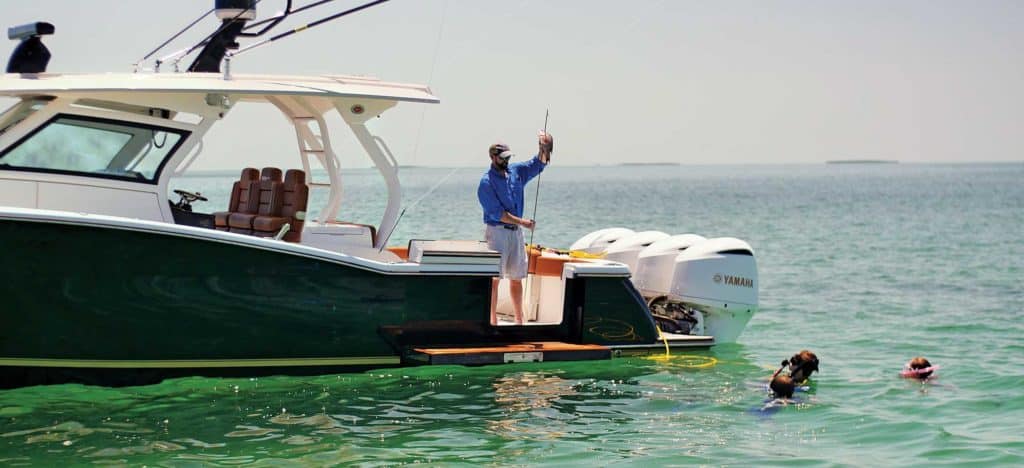
Unique Openings
Ever more convenient ways for divers to access the water have evolved in recent years. The Scout 420 LXF, for example, features a dive door that’s hinged at the bottom edge. When opened, it becomes a 6-foot-wide dive platform that extends 2 feet 4 inches outward. Boston Whaler’s 270 Dauntless is available with a fold-out swim patio on the port side to make diving easier.
Even more dramatic is the dive access point on the Belzona 325 Center Console and 327 Walkaround. The entire aft gunwale slides smoothly astern to create a wide starboard-side opening. A port slider is optional. When you’re done diving, slide the door closed to secure the cockpit.
Not to be outdone are Sea Ray’s SLX 400 (2017 Boat of the Year) and SLX 400 OB. The side of the boat in the starboard quarter folds out to become what Sea Ray calls a patio wing, but which divers will view as a great way to drop in. A foldout boarding ladder on the aft swim platform offers an easy way to reboard.

Tanks for the Stowage
One of the issues for scuba divers is finding a way to secure dive tanks. Otherwise, the heavy, cylindrical tanks tend to roll about like proverbial loose cannons in sloppy conditions, threatening to damage the boat interior and equipment and injure crewmembers.
One common solution takes the form of tank rack systems such as those from Roll Control (in which tanks snap in and out) or XS Scuba (which uses bungees to secure tanks). Yet where you install these racks poses a question. There are a number of choices, but in a custom boat, it’s important to work with the builder in deciding where and how you want to secure tanks, says Clinton.
Intrepid has designed some innovative tank stowage systems, including motorized racks on one of its custom 40 Cuddy models. Four tanks (two on each side) elevate from inside the transom to the perfect height to mount and dismount them while seated at the foldout stern bench-style seats.
In less elaborate, albeit elegantly simple, solutions, a builder might use a locker or create recesses under the gunwales for tank racks. On the Scout 420 LXF, for example, an insert fits inside the covered transom livewell to convert this space to top-loading stowage for five tanks. The insert is quickly removed when it’s time to go fishing and you want to carry live bait.
Aboard the Boston Whaler 330 Outrage, there’s a lounger forward of the center console, and underneath is an elongated stowage locker — Whaler calls it a garage — where you will find racks to secure scuba tanks.
Read Next: Five Scuba Diving Safety Tips for Boaters
The interior of a center console represents another location for tank racks. The best center consoles for this purpose are those that open from the front. This gives you more elbow room to transfer tanks in and out versus a console that has the door on the side. These racks can also hold helium tanks for those days when you want to kite-fish but there’s not enough wind, so you need a big helium balloon to keep the kite aloft.

Stowing Gear
“A common theme among boating divers is a desire to have a home for everything,” says Clinton. With this in mind, Intrepid asks its dive-oriented customers to bring in all of their gear during a design session, he reveals. In this manner, Intrepid can build a boat that has a place for every piece of equipment, from masks, fins and weight belts to wetsuits, buoyancy compensators and spear guns.
To accommodate dive enthusiasts, some boat models offer abundant built-in stowage for gear. The Belzona 325 CC Adventure Edition, for example, features copious room for dive gear under the wraparound seating in the bow, as well as below the lounger forward of the center console.
While it’s one thing to stow gear when you’re inside the boat, Intrepid has also created ways to stow and retrieve gear when you’re in the water. “We created hatches for the wet-stowage locker on the outside corners of the 375 Center Console and 375 Walkaround,” Clinton explains. Each can be opened and closed by someone in the water. This eliminates the need to hand items like fins and masks to someone on deck. Instead you can stash gear — or perhaps even transfer a live lobster or two — using the corner lockers. This negates the need to bother crewmembers or toss your expensive dive equipment on the deck.
BONUS! 5 Must Have Scuba Safety Items!

Filling the Need
While snorkelers and freedivers don’t need air tanks, scuba enthusiasts do. And they often want to stage more than one dive per trip, or even plan multiday trips to remote locations where there’s no place to refill scuba tanks.
One solution lies in an onboard tank-refill system. The AC-powered YachtPro Series of high-pressure compressors from Brownie’s Marine Group includes a number of models designed expressly for refilling dive tanks with air. The larger YP55 and YP75 compressor systems fit nicely in the engine rooms of boats as small as 45 feet in length.
On the other hand, the YP25SF-U light-duty compressor is compact enough to fit below deck on a boat as small as 30 feet in length, yet this system will automatically fill up to four tanks at the same time. Given the system’s need for 115 volts AC, you will need to run it with shore power for refilling between trips or spec out a marine generator for your dive boat if you want to refill tanks at sea. Brownie’s recommends sending out a test sample of the compressed air annually to check for purity using a lab such as Lawrence Factor.
Read Next: Harvesting Seafood From Your Boat
Another option is to forgo scuba gear and instead use a Third Lung system from Brownie’s (starting at $1,995). These hookah systems supply compressed air via long hoses to divers, so you don’t need any tanks. You can get a self-contained floating system powered by a gasoline engine or electric motor. Or you can get a compressor system built into the boat, powered by AC or DC electricity. The floating systems offer the greatest flexibility, allowing as many as four divers to venture well away from the boat (as long as everyone goes the same direction).
While renting or refilling a scuba tank at a dive shop requires a PADI certification card, no such card is required for using a Third Lung system, since there are no tanks. However, Brownie’s offers an online training course with the purchase of each hookah system, says Tom Furbish, director of sales for Brownie’s.
“The program is an interactive, Web-based learning course designed to teach you how to properly and safely use your hookah system,” Furbish explains.
As the Brownie’s website points out: “Breathing in an underwater environment can be dangerous, or even deadly, if you don’t know the rules or if you choose to ignore them. Proper training is crucial to minimize risk and maximize enjoyment.”

Stable and Able
Donning a wetsuit and strapping on a tank and weight belt (which together can weigh as much as 50 pounds) are a lot easier when the deck is stable. Until recently, divers didn’t have much control over deck stability. They simply hoped for smooth seas when suiting up.
Now, however, thanks to new gyrostabilization systems from companies such as Seakeeper, scuba divers can prepare on a deck with virtually zero roll. This trend is an offshoot of larger passenger dive vessels such as the Calypso Star 2 shark-cage dive boat in Australia, which is equipped with a heavy-duty Seakeeper for comfort, safety and to help keep passengers from becoming seasick.
An increasing number of recreational-boat builders now offer smaller systems such as the Seakeeper 3 and 5 as options, and these seem like natural choices for dive enthusiasts who have the money to afford a gyrostabilization option.
The elimination of roll can increase safety for divers when they are boatside, transferring gear and equipment, and waiting to reboard the boat, reducing the chance of the hull rolling on top of a diver or smacking the person preparing to climb back in.
Warming Up
Rinsing dive gear with fresh water to get rid of corrosion-causing salt is good idea. “That’s why many boat-owning divers insist on a freshwater washdown system,” says Javier Carabeo, director of marketing for Belzona Marine. “This is a standard feature on the Belzona 325 models.”
Yet hot-water heaters are also in demand by divers so they can pull out a shower nozzle and rinse off with warm fresh water after an excursion in the depths. This becomes especially important in places like California where the ocean water can turn chilly. Some divers also like to fill their wetsuits with warm water before jumping in. It helps fend off the chill.
Most dive enthusiasts prefer to anchor up before dropping in to explore, photograph or spear-fish a reef or wreck, and so a roomy anchor locker that holds plenty of rode and an electric windlass to retrieve the anchor are important elements of a dive boat.
Let’s face it, you can scuba-dive, snorkel or freedive from just about any boat. Yet, as with models designed for high-speed, fishing or wake sports, a boat that’s customized and equipped for diving makes the pursuit of the sport that much easier, safer and more enjoyable. So, if you’re among those brave souls who love to go overboard, make sure your next boat is prepared to dive.

